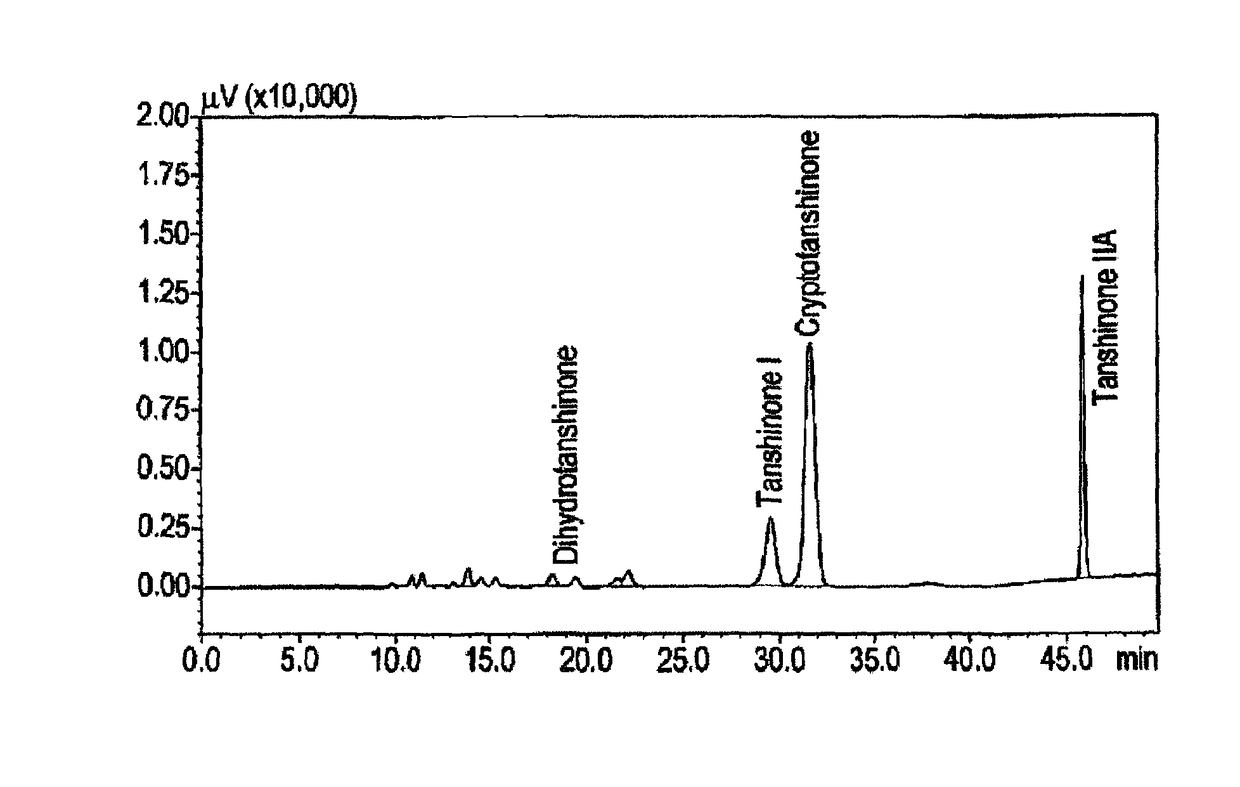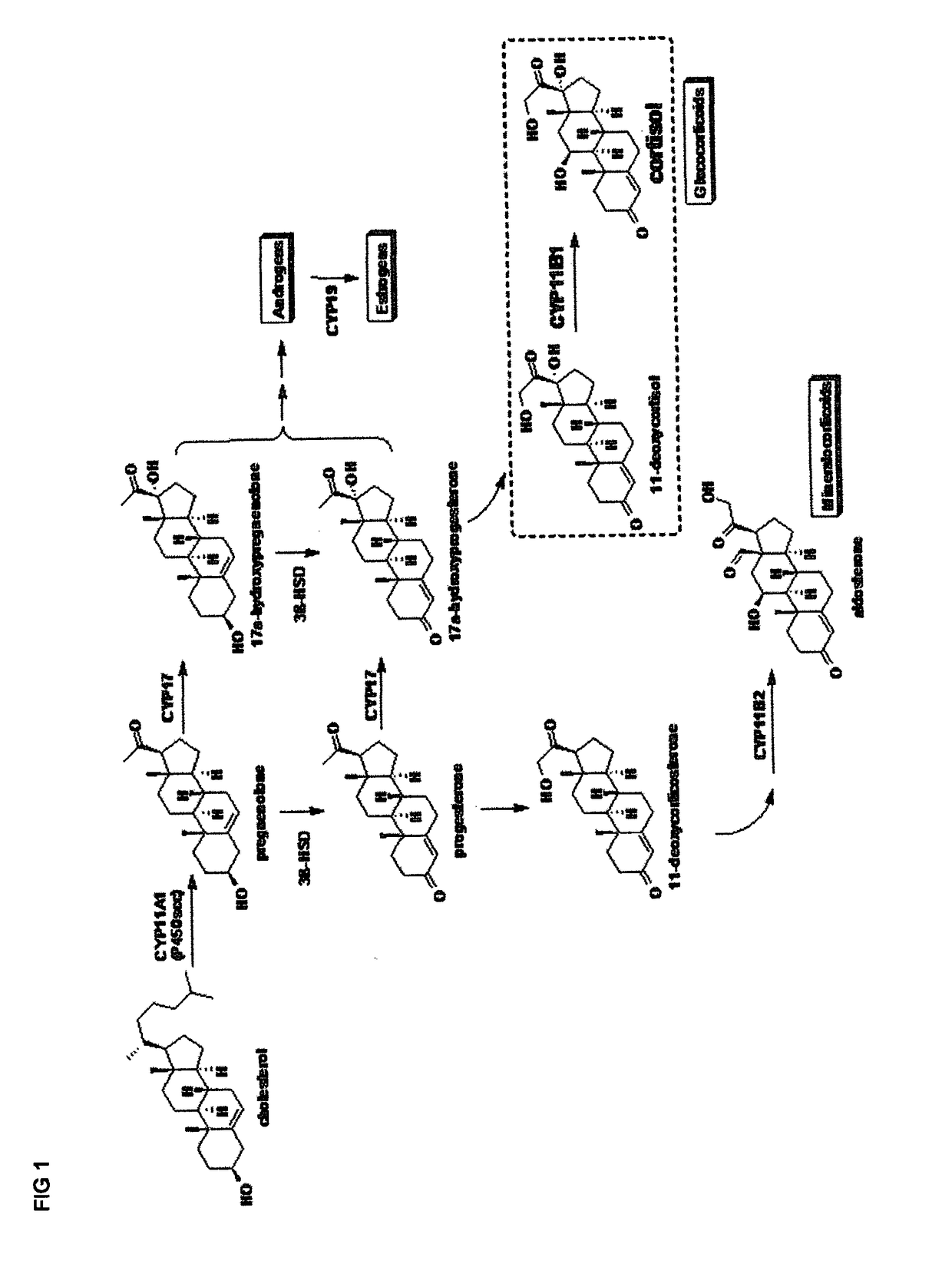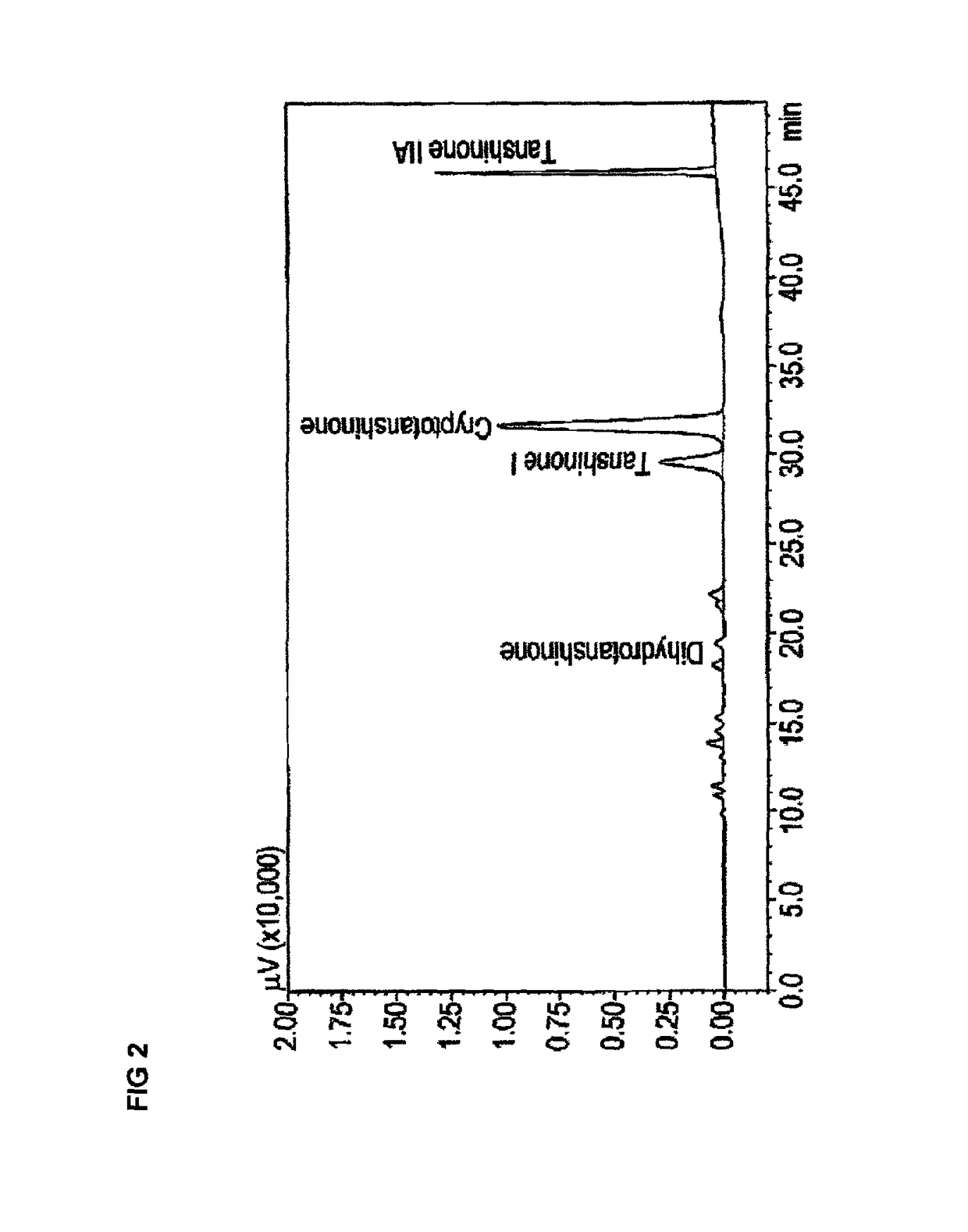A plant extract and compounds for use in wound healing
a technology of plant extract and compounds, applied in the directions of plant/algae/fungi/lichens, drug compositions, cardiovascular disorders, etc., can solve the problems of chronic wounds that may never heal or may take years to do, and the balance is lost, so as to achieve the inhibitory effect maximum
- Summary
- Abstract
- Description
- Claims
- Application Information
AI Technical Summary
Benefits of technology
Problems solved by technology
Method used
Image
Examples
example 1
1.1. Preparation of the Extract Solutions
[0104]Applicant dissolved ˜10 mg of the Salvia m. Bunge extract (as disclosed in WO2009050451) in the required volume of 100% ethanol or 100% DMSO to obtain a 1% (w / v) extract solution. They tested 5 μL of this solution in a 500 μL assay incubation volume (final ethanol or DMSO conc. of 1%). From this 1% Salvia m. Bunge extract solution, they also prepared a 1:10 and 1:100 dilution in 100% ethanol or 100% DMSO. From these solutions, they tested 5 μL in a 500 μL assay incubation volume.
[0105]1.2. CYP11B1 Assay
[0106]The V79MZh11B1 cell line, expressing recombinant human CYP11B1, was cultured in Dulbecco's modified Eagle (DME, Sigma) medium supplemented with 5% fetal calf serum (FCS; Sigma), penicillin G (100 U / ml), streptomycin (100 μg / ml), glutamine (2 mM) and sodium pyruvate (1 mM) at 37° C. in 5% CO2 in air. Cells were placed on 24-well cell culture plates (8×105 cells per well) and cultured in 1 ml DME medium per well until confluence. On t...
example 2
[0111]V79MZh11B1 cells were cultured on 24-well cell culture plates (8×105 cells per well) in 1 ml DME medium until confluence. On the day of testing, DME medium was removed and 450 μl of fresh DME medium with 5% FCS, containing 5 μl of the Salvia m. Bunge extract solution in 100% ethanol, was added to each well. Ethanol (1%) and Triton® X-100 (0.0006%) were used as vehicle and positive control (all final concentrations), respectively. All measurements were in quadruplicate. After 60 min at 37° C. in a 5% CO2, 50 μl of fresh DME medium (+5% FCS) was added to each well. After 25 min, medium was replaced by 500 μl fresh DME medium (+5% FCS) to which 25 μl of MTT solution (5 mg per ml PBS, pH 7.2) was added immediately. After 30 min, all medium was removed and the cells were lysed in 250 μl of 0.5% acetic acid (v / v), 10% SDS (w / v) in DMSO. Absorbance of formazan was measured spectrophotometrically at 570 nm wavelength
[0112]Results
[0113]Determination of the E...
example 3
[0115]Given the activity of the extract the Applicant looked at the activity of some of the tanshinones using the methodology described in Example 1.
[0116]The tanshinones tested in V79MZh11B1 cells were:[0117]tanshinone IIA,[0118]tanshinone I,[0119]dihydrotanshione I, and[0120]cryptotanshinone.
[0121]The results are shown in Table 3 below:
TABLE 3Table 3. CYP11B1 inhibitory effect of tanshinone IIA,tanshinone I, dihydrotanshione I and cryptotanshinone.The results are mean ± SD of 2 independent experiments.Tanshinone IIA% CYP11B1Tanshinone I% CYP11B1ConcentrationInhibitionConcentrationInhibition 1 μM5.9 ± 0.2 1 μM19.1 ± 7.9 10 μM16.1 ± 13.5 10 μM63.7 ± 4.5100 μM29.4 ± 0.4 100 μM81.1 ± 6.9Dihydrotanshinone% CYP11B1Cryptotanshinone% CYP11B1ConcentrationInhibitionConcentrationInhibition 1 μM43.3 ± 14.7 1 μM 6.4 ± 1.6 10 μM93.6 ± 9.1 10 μM 15.4 ± 10.3100 μM100.0 ± 0.0 100 μM 59.9 ± 22.0
[0122]It will be apparent from the results that each of the tanshinones exhibited inhibitory activity, w...
PUM
| Property | Measurement | Unit |
|---|---|---|
| Fraction | aaaaa | aaaaa |
| Fraction | aaaaa | aaaaa |
| Weight | aaaaa | aaaaa |
Abstract
Description
Claims
Application Information
 Login to View More
Login to View More - R&D
- Intellectual Property
- Life Sciences
- Materials
- Tech Scout
- Unparalleled Data Quality
- Higher Quality Content
- 60% Fewer Hallucinations
Browse by: Latest US Patents, China's latest patents, Technical Efficacy Thesaurus, Application Domain, Technology Topic, Popular Technical Reports.
© 2025 PatSnap. All rights reserved.Legal|Privacy policy|Modern Slavery Act Transparency Statement|Sitemap|About US| Contact US: help@patsnap.com



